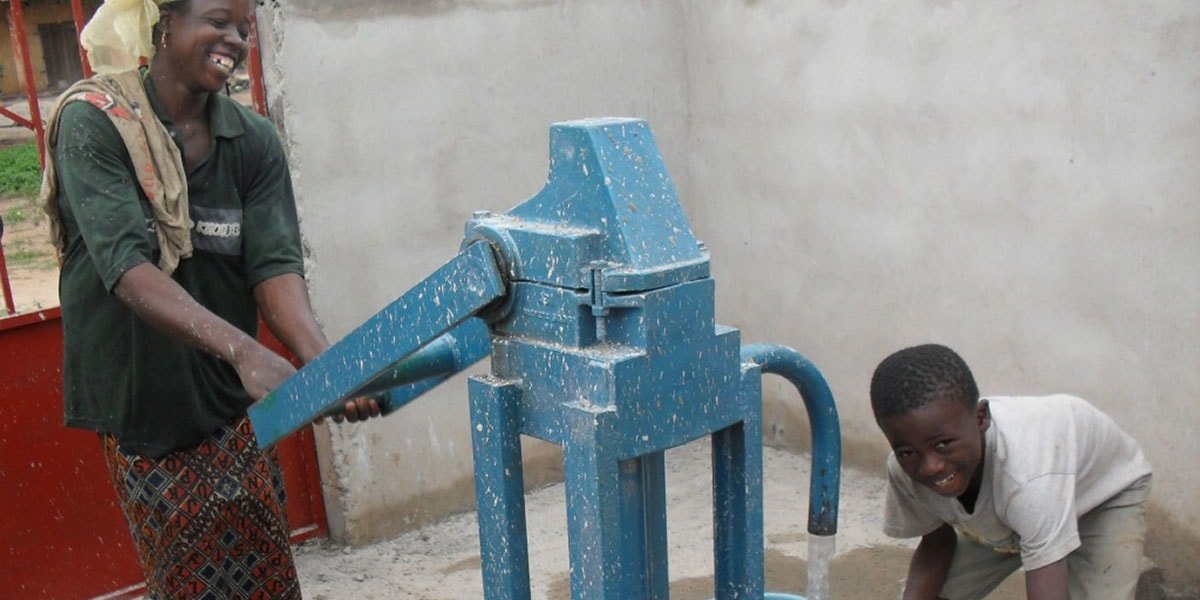

The specific objectives of this project in Côte d´Ivoire include the rehabilitation of 30 water pumps (to serve 8,400 individuals), the rehabilitation of 45 latrines (to serve 225 individuals), the training of 3,000 people and the distribution of hygiene kit/non-food items for 4,000 individuals.
Today in Côte d’Ivoire:
- 35% of people living in rural areas do not have access to safe drinking water;
- 7.5% of girls under 15 are in charge of fetching water for their family;
- 43% of the population does not have access to appropriate sanitary facilities (MICS 2006).
The economics of water in Côte d’Ivoire
The project targets vulnerable farmers. Poor farmers and workers are less productive due to frequent illnesses. Without safe water and appropriate sanitation, sustainable development is impossible. Additional beneficiaries are farmers’ families (women and children).
Diseases, education and women’s rights
Mainly girls – are denied their right to education because they are busy fetching water or are deterred by the lack of separate and decent sanitation facilities in schools. Women are forced to spend large parts of their day fetching water (85.9% of women in Côte d’Ivoire are in charge of supplying their family with water).
Poor access to safe drinking water, hygiene and sanitation facilities increases children’s exposure to diseases in Côte d´Ivoire such as diarrhoea, malnutrition, malaria and even HIV.
Diarrhoea is a major child and infant killer in the country, caused by microbes which spread in water, food, on hands, on eating and drinking utensils, by flies and dirt under the fingernails. 88% of diarrheal diseases are due to unsafe water supply, inadequate sanitation, and hygiene.
In Cote d’Ivoire diarrhoea kills around 87,000 children under five years each year.
Our office tackling poverty in Côte d’Ivoire is implementing the project in partnership with local authorities and the communities’ members.
Mobilising local communities
Community mobilisation engages all sectors of the population in a community-wide effort to address health, social, or environmental issue. The Project Supervisor brings together local villages authorities and opinion leaders, religious groups, businesses, and individual community members.
Part of the process, conducted by the Project Supervisor, includes mobilising necessary resources, disseminating information, generating support, and fostering cooperation across communities’ members. The key point of this mobilisation is to reinforce the capacities of water pumps committees and empower the villages’ members to maintain the rehabilitated and built infrastructures.
| Total project beneficiaries | Direct | Indirect |
| Men | 450 | 1,800 |
| Women | 559 | 2,00 |
| Boy | 465 | |
| Girl | 600 | |
| Total | 1,009 | 4,865 |
Pumps rehabilitation
The volunteer’s work is one of the most important activities in the process. During this intervention, community members participated by helping the artisans fix the water pumps. When the process is conducted with the involvement of the communities, it ensures the sustainability of the infrastructure.
All Pump rehabilitations were carried out during the month of June 2016, with the participation of community members (both men and women). Local artisans performed the repairs. The intervention consisted of two phases:
- Purchase, transportation and delivery of pumps and equipment
- Carrying out the work including the repair of the pump and the construction or rehabilitation of the fences.
The Village chiefs’ support has been essential in this process. They mobilised community members and assisted the project supervisor in disseminating information about the project and in community meetings. They provided crucial help to the local committees in order to collect money and manage the rehabilitated pumps.
Each rehabilitated pump will serve an estimated 56 families for a total of 280 in all 5 villages, (56 X 5), or approximately 1,400 persons. The community residents will pay an annual fee of €2.30 to have access to water between 5 AM to 8 PM. The money collected will be used to maintain the pumps.
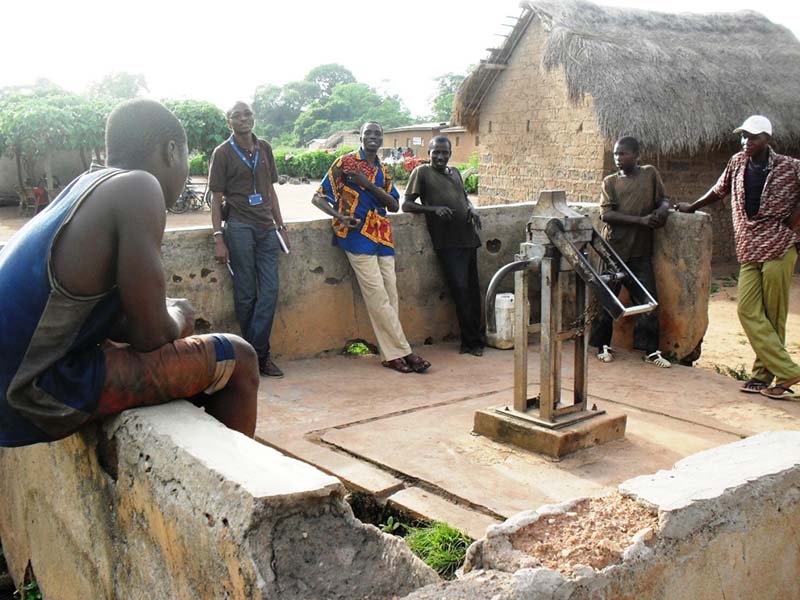
Community training in hygiene
During the project assessment, one of the big challenges was the fact that they were no pump management committees in place in the any of the villages. This situation was a concern to ensure the proper management of the infrastructures. Therefore we set up and trained five new water pumps management committees.
The training focused on pump maintenance and good hygiene and sanitation practices. The training objective was to promote a transfer of expertise at the local level so that they provide durable protection and maintenance of rehabilitated structures. Women were encouraged to take an active part in the committee activities.
Skills & hygiene training
The members were trained in technical management (maintenance of pumps), in financial management (simplified accounting) and water hygiene. Two days were required in each community to conduct the training session. 1,000 people have been trained so far and received hygiene kits.
To ensure the training has permitted to reinforce the participants’ knowledge, evaluations were conducted before and after the training sessions. The post-test showed an increase in knowledge, with the lowest score being 14 out of 15 points.
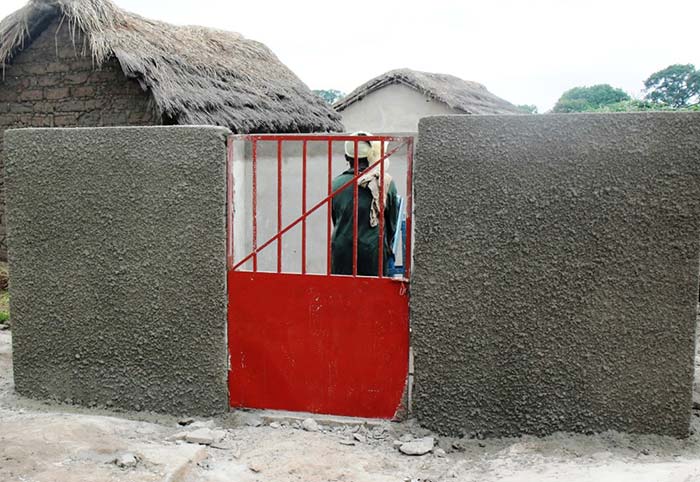
Construction of toilets
The selection of the families to benefit from the building of latrines was one of the most important aspects of this intervention. In the target area, 43% of the population does not have access to appropriate sanitary facilities.
In the target villages, most houses do not have toilet facilities. Sometime children use the backyard of houses as latrines, because they are too young to use the dangerous public pit latrine… Family members are forced to defecate in the open air.
Toilets save lives
Many are constructed in open places from old cement blocks. Others are made up of palm branches and sticks. Bathing facilities are also very poor and unhygienic. Health problems invariably arise as a result of bathing in the open during rainy seasons or cold periods.
Stagnant water is also found around these places, which encourages mosquitoes and leads to malaria – one of the leading causes of death.
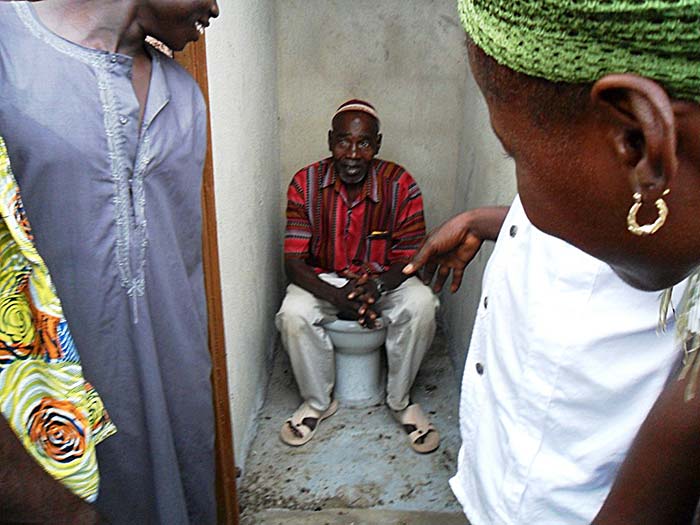
Community participation
To build the toilets and rehabilitate the water pumps, each community is organised into two or three groups composed of at least ten people. The building activities were organised every day by the village water pump committee from 8.00 AM to 5.00 PM. The “sweat equity”, or a number of volunteer hours the community contributes, averages around 100 hours per infrastructure. The non-skilled volunteer work includes:
- Site cleaning
- Brick making
- Digging of foundation
- Transporting water


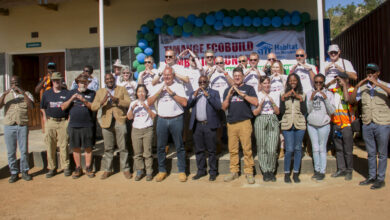
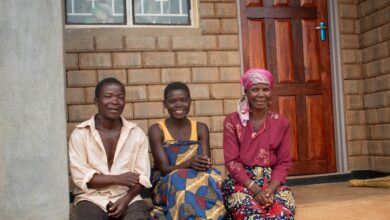
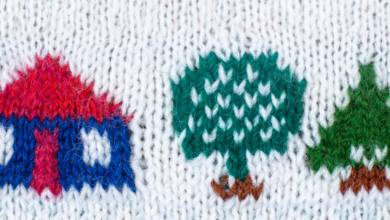
Comments